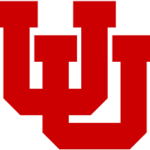The (Statistical) State of Utah’s Program – Part 4/4: Expansion Possibilities
Welcome to Ute Hub › Forums › Utah Utes Sports › Football › The (Statistical) State of Utah’s Program – Part 4/4: Expansion Possibilities
- This topic has 3 replies, 3 voices, and was last updated 2 years, 4 months ago by
krindor.
-
AuthorPosts
-
-
krindor
ParticipantSo we’ve seen how Utah is doing in recruiting, on the field and on TV. But what does that all add up to in terms of value. If we’re talking value (and/or conference realignment), those are two important factors – as well as market size
So here’s an image of possible expansion candidates (every ACC, Big 12, PAC school and a few G5s), considering market size, on-field success (over the last decade) and viewership scores (over the last 5 years)
*note that Clemson isn’t included since they’d be so far above the rest that it makes the image jumbled in the main group*

(Or for a higher quality, interactive version, click here)
Considering all three metrics
- On-field Performance: As mentioned, Utah looks very good by on-field performance (#4/46 possibilities listed, only behind Clemson, Oregon and Oklahoma St and just ahead of Washington and Florida St). Unfortunately, this is no longer the driver of team value
- Market Size: Not terrible, but more midlevel than top tier. #18/46 listed here. P5s ahead of Utah are TCU, Stanford, Cal, Houston, Arizona St, Boston College, Georgia Tech, Washington, Colorado, UCF, Miami and Oregon – as well as G5s Army, SMU, USF, San Diego St and Navy. Beyond, this doesn’t really consider that UNC and Virginia and Virginia Tech draw much of their state beyond their given market. Obviously not a lot Utah can do to change this one, but at least the state is growing. This growth will likely be important to Utah’s future ambitions
- Viewership Score: Probably the most important category and the one Utah is hoping to improve. Like we said, it’s above average (#11/64), but not really top tier either. Behind Clemson, Oregon, Florida St, Oklahoma St, Washington, Miami, West Virginia, North Carolina, and Stanford, this can be seen as either a (mild) strength or a weakness. #11 is fairly good (though not enough to have anyone knocking down the door), but it’s also a concern that Utah’s viewership is below the trendline (compared to how good the team has been on the field)
So considering all three of those factors – Utah is on the periphery, and has a stronger case than might have been expected… but there’s also a reason that Utah isn’t being mentioned as one of the top candidates right now – not like Washington, Oregon, Florida St, Miami, Clemson, UNC, Stanford, maybe a few others.
The key here is to maintain that strongest argument (on-field success) since it should drive higher viewership. Right now, Utah’s viewership is a bit low compared to the win rate (you’d probably expect closer to 23.5% than the current 19.7%), but if that trends up and the state grows (as it has been) then Utah could become a strong candidate for any conference (I think it’s clear from everything we’ve looked at that Utah would already be a strong addition for the Big 12, but I think it’s also clear that isn’t the goal)
As long as we’re here though, let’s also take a look at possible PAC12 expansion possibilities. Say what you will about BYU, Cincy, Houston and UCF to the Big 12, but they were the clear strongest expansion candidates. San Diego St (based on geography and market is a strong add for the PAC, but the second choice is difficult.
- Boise St: is the strongest on the field and gets the best viewership, but has a small market and terrible academics (which matters to the PAC)
- Fresno St: has largely the same limitations as Boise St… but without the on-field success or viewership
- SMU: is a pure upside play in a big market…but has been pretty bad and hasn’t drawn attention
- Other options: are all too far away (Memphis, Navy, Army, USF), can’t scale to a P5 (Army, Navy), or just have absolutely zero success and fanbase (UNLV, UTSA).
Makes for a legitimately difficult decision and I wouldn’t be surprised to see only SDSU invited if the PAC can’t poach a P5 from elsewhere
-
 UteifiedParticipant
UteifiedParticipantThis analysis is interesting. Great work. One side note, Army and Navy’s high viewership score make me wonder if the formula needs a small tweak. I can’t recall many big televised games outside of the army-navy game, and perhaps a matchup with ND, where numbers would be driven by the opponent. Do they really get strong viewership on other games?
-
krindor
ParticipantThe issue is how absolutely huge that game is. This year (in a down year) it brought in 7M viewers. Most years it’s at 7.5M or more.
I’ve thought about categorizing it as postseason play (like bowls and CCGs) and therefore exlcuding it from my analysis, but it’s predictable, repeatable, dependent on the specific teams and therefore extremely valuable. So it definitely has to be recognized.
For example, last year Navy had a total year-viewership of 12.5M. And yeah, 7.6M of that came from the Army/Navy game, with another 3M from Notre Dame and Navy/Air Force, but that 12.5M is still impressive.
For context here’s the total regular season viewership for PAC teams in 2021
- Oregon 30.86M
- UCLA 14.10M
Navy 12.48M - Utah 11.93M
- Washington 11.82M
- USC 10.06M
- Stanford 9.34M
- Arizona St 8.87M
- Colorado 8.50M
- Washington St 5.8M
- Arizona 4.05M
- Oregon St 3.85M
- Cal 2.3M
Now, last year was a bit of a down year for the PAC (this year Navy would be behind Oregon, USC, UCLA, Washington and Utah) but it can’t be overstated how huge that game is.
This year is actually the ONLY year in the last 5 that Utah has had more total regular season viewers than Navy. Over the past 5 regular seasons, 54.5M have watched them play (across 25 games). By comparison, Utah has had a total of 47.7M viewers (spread across 33 games).
Given that, the reality is that Navy and Army really DO draw that much and probably deserve the viewership score they get. At this point, it wouldn’t surprise me if Navy was worth nearly as much (or even more) to a TV executive as Utah – based almost entirely on that one game (the regular Notre Dame game obviously helps too).
Of course, it’s also important to note that Navy’s viewership absolutely won’t scale as well (which is important if you’re considering the future and conference memberships) and that Army/Navy actually bids that single game out separately anyway (not included in the AAC contract)…but the reality is that it draws viewership in line with a non-playoff NY6 game (non-Rose-Bowl variety).
So I’ve tinkered with formulae some and tested, and added multiple steps to scale down the effect… but it’s so huge that it still shows up in a big way. Ultimately I think it’s best to just give Army/Navy their credit, while making a note/caveat of how uniquely driven and non-representative it is and pointing out issues with scaling.
-
-
 noneyadbParticipant
noneyadbParticipantB1G won’t expand again unless Notre Dame is included. With the expansion of the playoffs I doubt it’s in the best interest for some Universities to chase a paycheck. UCLA is going to struggle with travel and the LA fickel fanbase when they could be a consistent top program in the Pac.
-
-
AuthorPosts
- You must be logged in to reply to this topic.
